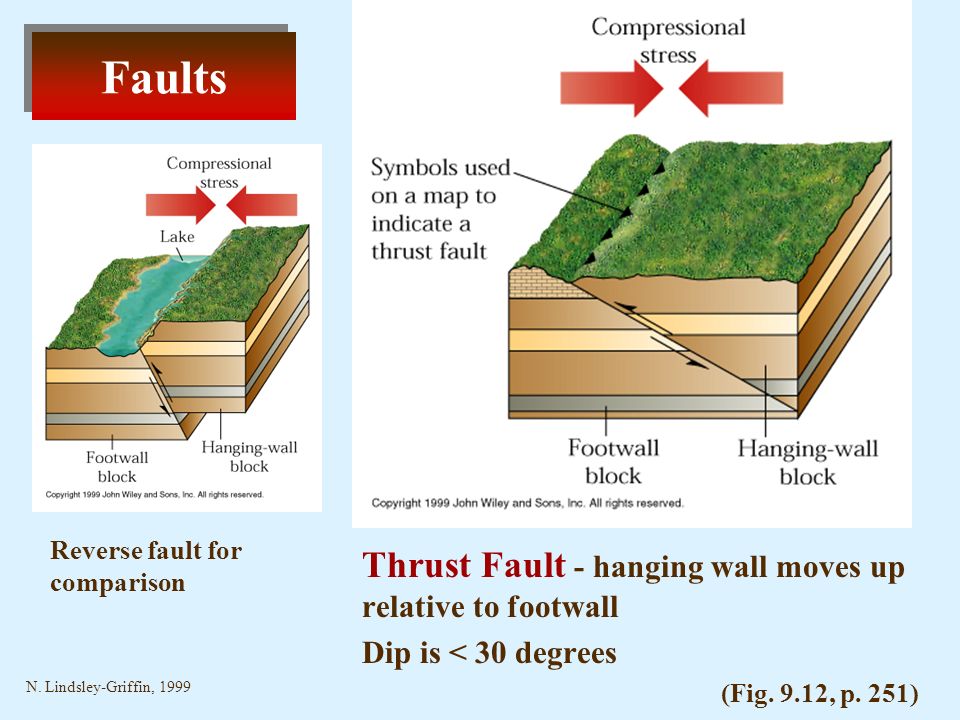When the hanging wall moves up in relative to the footwall it is called a fault.
Hanging wall footwall hanging wall up.
On each photo draw arrows showing the relative movement on each side of the fault.
The forces creating reverse faults are compressional pushing the sides together.
Other articles where hanging wall is discussed.
When the hanging wall moves down in relative to the footwall it is called a fault.
Hanging wall definition the underside of the wall rock overlying a vein or bed of ore.
In a non vertical fault where the fault plane dips the footwall is the section of the fault that lies under the fault while the hanging wall lies over the fault the names come about from the.
The dip of a reverse fault is relatively steep greater than 45.
An arcuate cliff called the headwall.
The terminology of normal and reverse comes from coal mining in england where normal faults are the most common.
In a reverse fault the hanging wall right slides over the footwall left due to compressional forces.
The mass of rock underlying a mineral deposit in a mine.
A reverse fault is the opposite of a normal fault the hanging wall moves up relative to the footwall.
These usually occur when tectonic forces cause tension that pulls rocks apart.
More common are headwalls angular in map view due to irregularities in height along.
Footwall synonyms footwall pronunciation footwall translation english dictionary definition of footwall.
The underlying block of a fault having an inclined fault plane.
Draw a normal and reverse fault label the hanging wall and footwall for each also show how they move for each fault.
Mike dunning dorling kindersle getty images.
Reverse faults form when the hanging wall moves up.
In an ideal cirque the headwall is semicircular in plan view.
This situation however is generally found only in cirques cut into flat plateaus.
Identify the type of fault illustrated by each photo and describe the type of stress that produced it.

